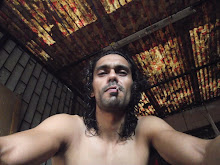

 Easter Island Rapa Nui: Rapa Nui, Spanish: Isla de Pascua) is a Polynesian island in the southeastern Pacific Ocean, at the southeasternmost point of the Polynesian triangle. The island is a special territory of Chile. Easter Island is famous for its monumental statues, called moai (IPA: /ˈmoʊ.аɪ/), created by the Rapanui people. It is a world heritage site with much of the island protected within the Rapa Nui National Park.
Easter Island Rapa Nui: Rapa Nui, Spanish: Isla de Pascua) is a Polynesian island in the southeastern Pacific Ocean, at the southeasternmost point of the Polynesian triangle. The island is a special territory of Chile. Easter Island is famous for its monumental statues, called moai (IPA: /ˈmoʊ.аɪ/), created by the Rapanui people. It is a world heritage site with much of the island protected within the Rapa Nui National Park.The name "Easter Island" was given by the island's first recorded European visitor, the Dutch explorer Jacob Roggeveen, who encountered Easter Island on Easter unday 1722, while searching for Davis or David's island. The island's official Spanish name, Isla de Pascua, is Spanish for "Easter Island".
Moai (or mo‘ai) (IPA: /ˈmoʊ.аɪ/) are monolithic human figures carved from rock on the Polynesian island of Rapa Nui (Easter Island) between 1250 and 1500 CE. Nearly half are still at Rano Raraku, the main moai quarry, but hundreds were transported from there and set on stone platforms called Ahu around the island's perimeter. Almost all moai have overly large heads three-fifths the size of their bodies. The moai are chiefly the 'living faces' (aringa ora) The statues still gazed inland across their clan lands when Europeans first visited the island, but most would be cast down during later conflicts between clans. of deified ancestors.
The statues' production and transportation is considered a remarkable intellectual, creative, and physical feat. The tallest moai erected, called Paro, was almost 10 metres (33 ft) high and weighed 75 tonnes; the heaviest erected was a shorter but squatter moai at Ahu Tongariki, weighing 86 tons; and one unfinished sculpture, if completed, would have been approximately 21 metres (69 ft) tall with a weight of about 270 tons.

No comments:
Post a Comment